China Machado – first Asian supermodel photographed by Richard Avedon in 1961 (Photo credit: arogundade.com)
Since this is Asian American and Pacific Islander Heritage Month, we thought we’d discuss the fashion industry’s long battle with inclusivity. Historically, fair-skinned, ultra-thin white models dominated the runways, ad campaigns, and magazine editorials. It would take decades for models representing racial diversity, body inclusivity, sexual inclusivity and the disabled community to be accepted.
Contrary to popular belief, the first non-white model to make it in mainstream fashion was not Black but East Asian. Her name, China Machado, a mix of Indian and Portuguese ancestry who, in 1956, became the first non-white beauty to break through fashion’s apartheid system when she secured a job as a fitting model at Givenchy. Ten years later, Machado would grace the cover of Harper’s Bazaar in 1971 and the cover of New York magazine in 2011.
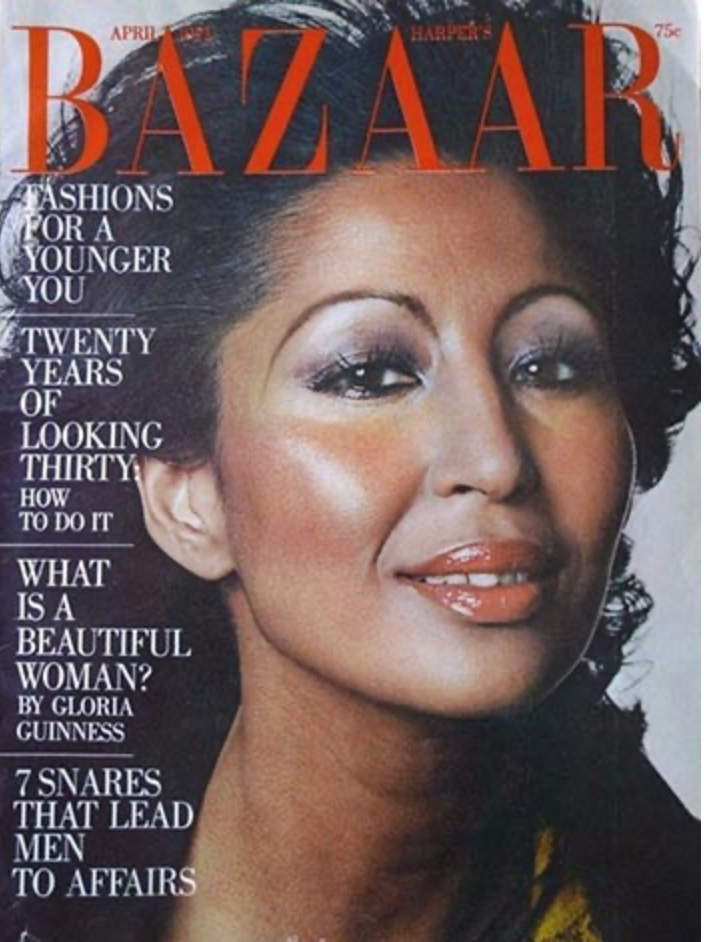
China Machado – Harper’s Bazaar cover 1971 (Photo credit: arogundade.com)
According to L’Officiel’s 21 top Asian Models – Kimora Lee Simmons at age 13 signed a contract with Chanel. Canadian supermodel Yasmeen Ghauri of Pakistani-German descent was the first South Asian woman to get a major luxury beauty contract and become a Victoria’s Secret Angel. Chinese beauty Liu Wen, who is the number five model in the world according to models.com, became the face of Estée Lauder in 2011, while Taiwanese male model Godfrey Gau secured a campaign for Louis Vuitton. At the same time, China’s Sui He has fronted campaigns for H&M and Karl Lagerfeld.
Asian model – Kimora Lee Simmons (Photo credit: L’Official)
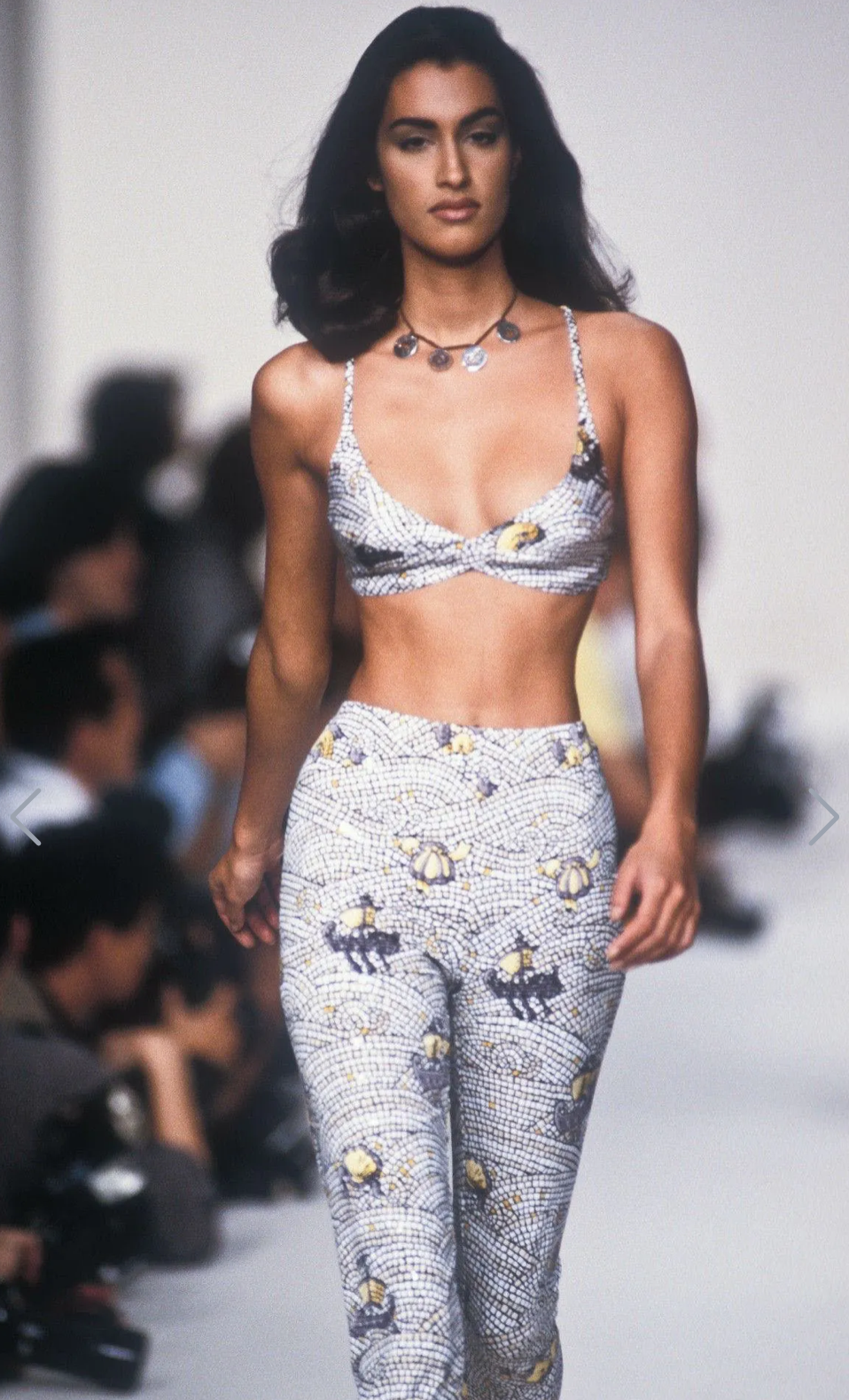
Asian model – Yasmeen Ghauri (Photo credit: L’Official)The first successful black model was Dorothea Towles Church (1922-2006) who broke the color barrier in the 1950s by modeling on the runways of Elsa Schiaparelli and Christian Dior in Paris. At the time however, U.S. modeling agencies, designers, and editors traditionally favored one body type and skin color; thin and white. Church enjoyed modeling in Paris so much she decided not to return to the United States, but her success and acceptance there was widely publicized in black magazines and periodicals in the U.S., including earning her a place on the cover of the African-American weekly Jet in April 1953. When she did return to the U.S. she was mostly ignored by the fashion industry.
Dorothea T. Church (1922-2006) – considered the first Black fashion model (Image credit: Brown Girl Collective Facebook)
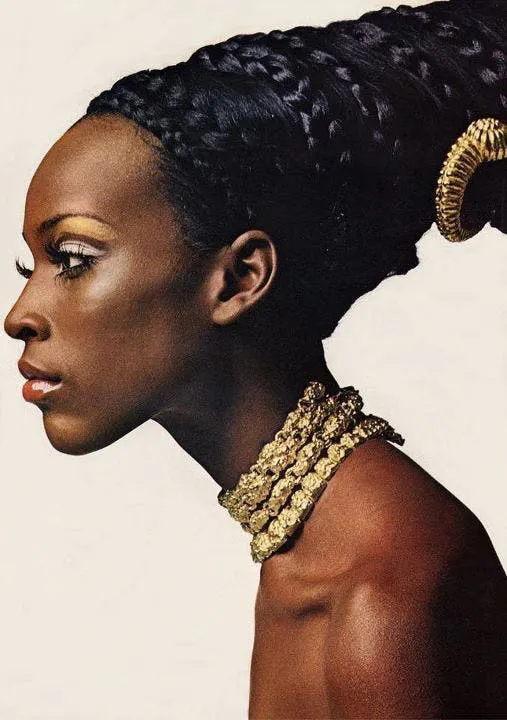
Naomi Sims started modeling in the 1960s and was the first African American model to sign to Willhelmina Models. (Photo credit: L’OFFICIAL)
While Church received notoriety in Europe, it was not until the ‘60s that the U.S. fashion industry embraced its first Black model, Naomi Sims. In 1968, Sims was the first African American model to grace the cover of Ladies’ Home Journal. And in 1969 Sims landed the cover of LIFE Magazine–making her the first Black model to do so. Sims was also the first Black model to be signed by a renowned modeling agency, Wilhelmina Models, thus paving the way for other Black models such as Pat Cleveland, Toukie Smith, Naomi Campbell, Iman, Beverly Johnson, Tyra Banks, plus the new generation of Black models, Joan Smalls and Winnie Harlow.

Supermodels Naomi Campbell and Tyra Banks. (Photo credit: The Sun)
Considered the fashion industry’s first fashion publicist, Eleanor Lambert was the first to use 12 Black models on the runway at the 1973 Franco-American fashion show held at the Palace of Versailles. This show became a defining moment in the acceptance of American fashion on the global stage.
In 2008, famed photographer Steven Meisel made news when he took on racism in the fashion industry by choosing only black models for a Vogue Italia spread.
Today, inclusivity is becoming the defining word in the fashion industry. Within the past few years, industry beauty standards have changed rapidly, with Generation Z voices and sociopolitical movements taking center stage across all forms of social media. The fashion industry has faced a broad array of criticisms involving diversity, inclusivity, ethicality, and sustainability and while fashion brands have made some progress, there is still a long way to go. Today, fashion houses are pushing for more diversity and inclusiveness in their shows and ad campaigns. It makes good business sense too.
Inclusivity and diversity have become vital components of retail for fashion consumers. Brands that have recognized the need for racial diversity, body inclusivity, sexual representation and representation of the disabled community are realizing that it is not only necessary but is the future of fashion.

Emily Barker in Collina Strada’s spring 2021 Lookbook. (Photo credit: Collina Strada)
Size inclusion was one of the first culprits of fashion inclusivity. For decades, only one body type was seen on runways, advertising campaigns, and fashion editorials – the ultra-thin, long-legged model with fair skin and sharp features; thankfully, the fashion industry has begun to embrace the body positivity movement, where women and men of all body types and sizes are represented.
The impractical beauty standards of U.S. sizes 0-4 are no longer tolerated by the public and the body positivity movement is the “largest push-back against a lack of diversity and positive self-images in the fashion industry,” according to Luxiders magazine. According to the magazine, body positivity was one of the first aspects of fashion inclusivity to be highlighted in the public eye, largely because traditional modeling agencies wanted “white, skinny, young and female.”
For decades young women suffered from low self-esteem due to constant fashion images of super thin, extremely tall, and primarily fair skin models, a mostly unattainable standard of beauty. According to Park Nicollet Melrose Center, a well-known eating disorder treatment facility, nearly 70% of perfectly healthy women desire to be thinner and 80% simply “don’t like how they look.”
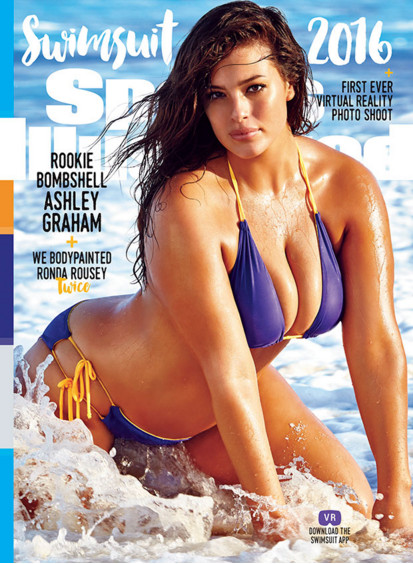
Ashley Graham – the first body-inclusive model to star on the cover of Sports Illustrated swimsuit issue 2016. (Photo credit: Sports Illustrated)
Ashley Graham has been a pioneer in the plus size modeling industry. In 2001, Ashley Graham began modeling as a young teenager, but in 2016 she became a breakout supermodel and graced the cover of the infamous Sports Illustrated swimsuit issue. The model was initially criticized for her size, but today she has become a well-known name in the industry and tells her story through her Instagram and Twitter posts. She’s even written a book, A New Model: What Confidence, Beauty, and Power Really Looks Like. Graham constantly works to inspire confidence in people of all sizes.
Of course, size inclusivity is only one part of the problem. Consumers are demanding diversity in the fashion industry, particularly racial and ethnic diversity. According to the Business of Fashion, the practice of “occasionally putting a non-white face on a magazine cover” is no longer enough (nor has it ever been). Fashion should reflect the consumer it serves, which means representing all types of people.
Racial and ethnic diversity is not just confined to models; true diversity requires hiring non-white stylists, designers, art-directors, and producers. It requires building fashion agencies with both diverse staff and diverse models, because doing so brings diversity into perspective.
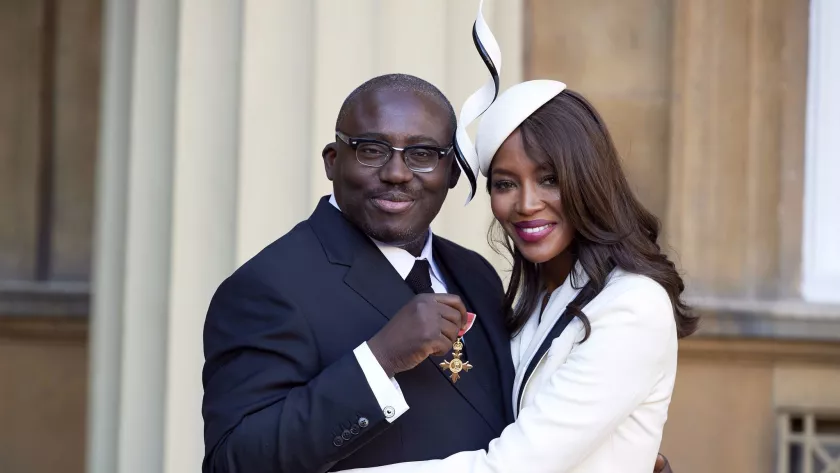
Edward Enninful after receiving his Officer of the Order of the British Empire (OBE) and Naomi Campbell in London on Oct. 27, 2016. (Photo credit: Shutterstock)
Edward Enninful, the editor-in-chief of British Vogue since 2017, is the most powerful Black man in his fashion industry. He sits at the intersection of fashion and media, two fields that are undergoing long-overdue change and clambering to make up for years of negligence and malpractice. Since becoming the only Black editor in history to head any of the 26 Vogue magazines—the most influential publications in the multibillion-dollar global fashion trade—Enninful has morphed British Vogue from a white-run glossy of the bourgeois oblivious, into a diverse and inclusive on-point fashion platform and shaking up the imagery, according to a Time Magazine profile piece on Enninful.
However, inclusivity doesn’t end there. Representation of the LGBTQ+community is also vital to the future of fashion and given that this community’s cumulative spending power would represent the fourth-largest economy in the world, the fashion industry better start representing this disregarded demographic. Consumers are forced to decide between two genders (male or female) regardless of whether they identify with either one and, for young individuals who are still figuring out both their sexual and personal identity, this is extremely limiting.
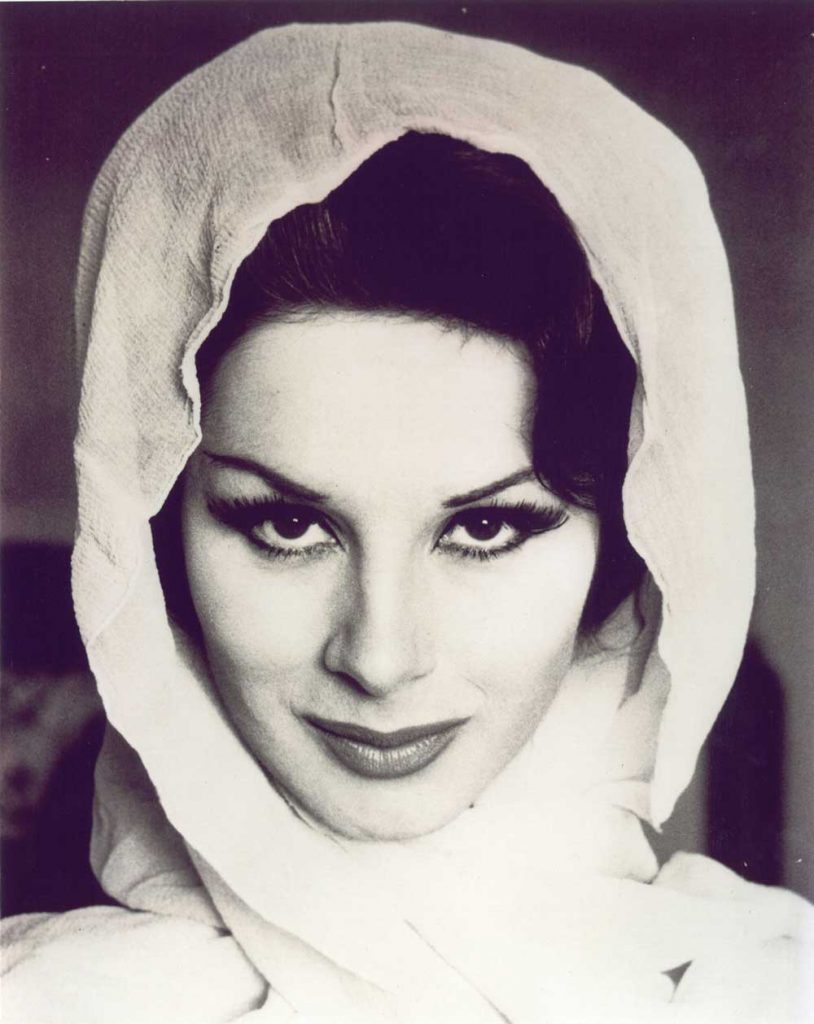
April Ashley – one of the first transgender fashion models in the 1960s. (Photo credit: Out magazine)
Modeling has also failed the LGBTQ+ community, with many transgender and non-binary models feeling “forced to conceal their identities” in order to achieve success in the fashion industry, according to Women’s Wear Daily. Members of the LGBTQ+ community should not have to hide their sexuality or gender to succeed.
When unrepresented individuals begin to see their community represented and succeed in a world as cut-throat as high fashion, it opens the door to a whole new market of consumers who wish to support the brands they see themselves represented in.
One of the most unrepresented groups are people with disabilities. According to Glamour magazine, individuals with disabilities are “often ignored in the world of fashion” despite having an estimated population of 1 billion. Vogue Business claims that, “in the U.S. alone, the collective spending power of people with disabilities is $490 billion.”
Seeing models in wheelchairs, with canes or wearing colostomy bags, among other types of physical disabilities, are images that disabled individuals are only now just barely seeing in the fashion industry. In 2017, London-based performing arts school founder Zoe Proctor and her sister-in-law, Laura Johnson, created Zebedee, the first-ever modeling and acting agency to focus exclusively on talent with disabilities.
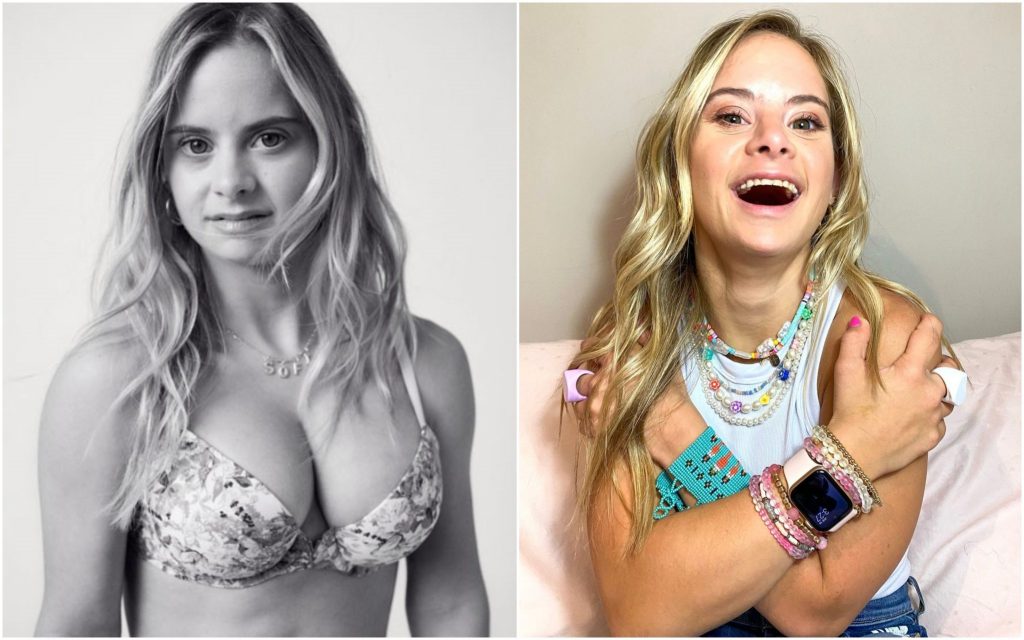
Sofía Jirau Makes History As the First-Ever Victoria’s Secret Model With Down Syndrome. (Photo credit: Left: Victoria’s Secret, Right: Sofia Jirau Instagram)
Recently, American lingerie giant Victoria’s Secret introduced its first model with Down’s Syndrome, and the world took note. For one, it was hailed as a big step towards inclusivity and diversity. The Puerto Rican model told Victoria’s Secret “It is a dream come true. I am happy to be able to show everyone that Sofia Jirau is going to shine around the world. I feel confident because fear is not in my vocabulary.” Jirau modeled for the brand’s latest collection, The Love Cloud.
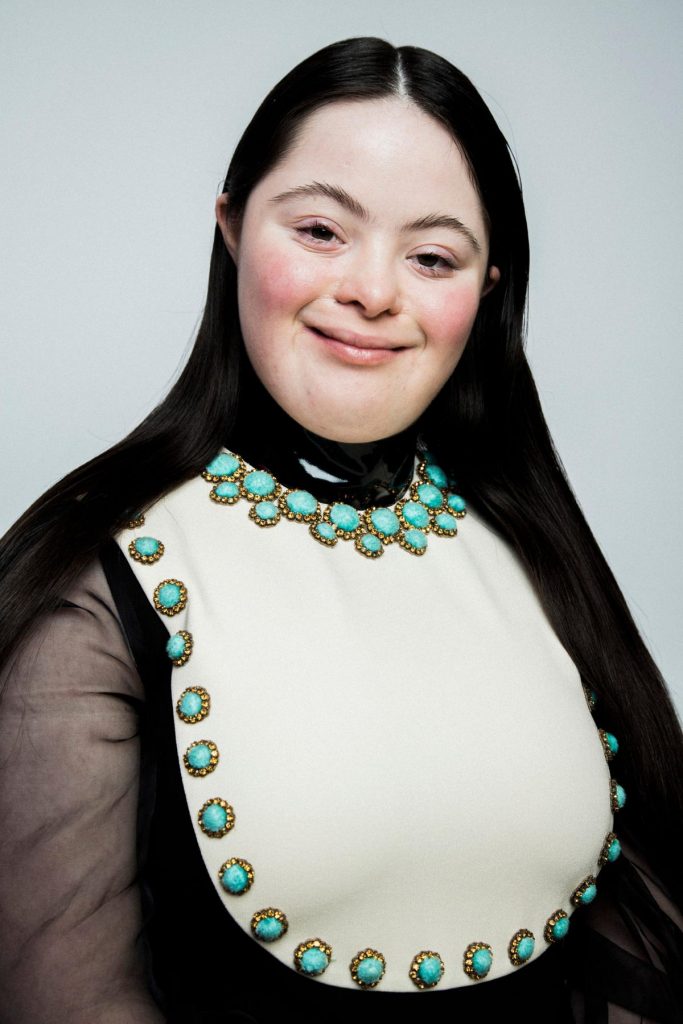
Ellie Goldstein, a British model with Down syndrome. (Photo credit: Gucci x Vogue Italia)
In 2020, 20-year-old Ellie Goldstein became the first model with a disability to land a Gucci Beauty campaign, and earlier, in 2017, personal care brand Dove featured a blind YouTube star Molly Burke for its campaign.
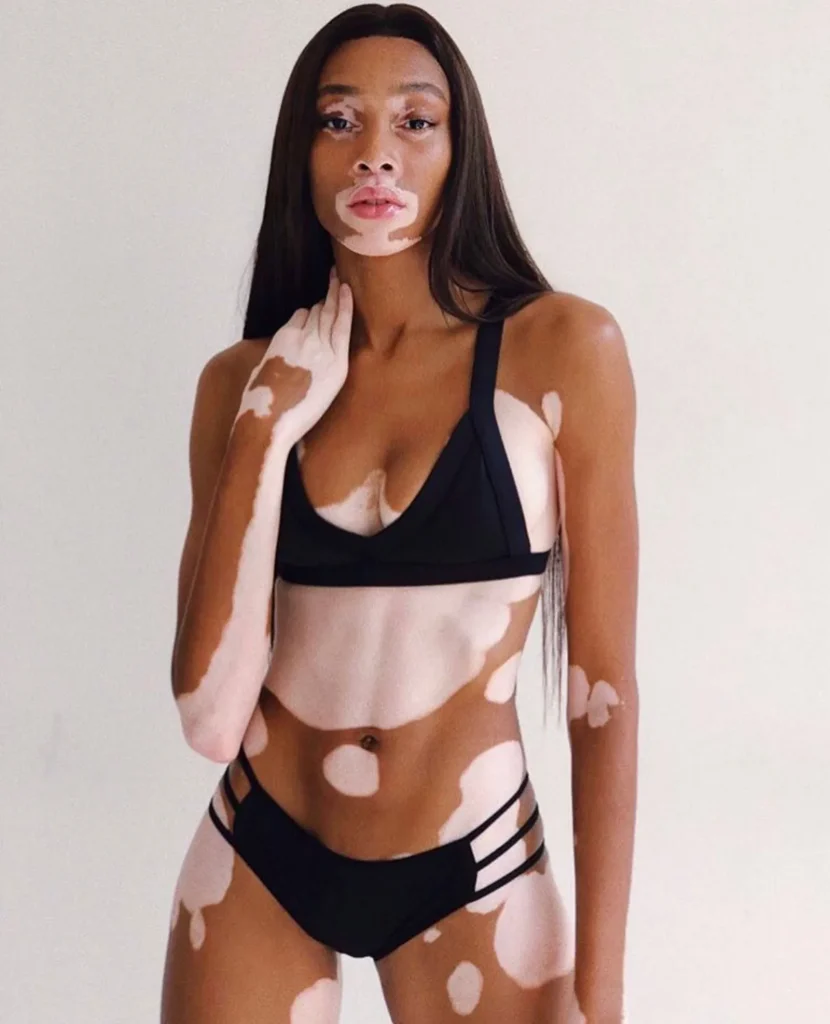
Winnie Harlow modeling for Vogue Magazine. (Photo credit: Vogue)
Jamaican-Canadian supermodel Winnie Harlow rose to fame in 2014 and has embraced her skin condition, vitiligo, with confidence while walking the runway with grace. To set an example and to inspire children with vitiligo, Harlow-inspired dolls with vitiligo are now available.
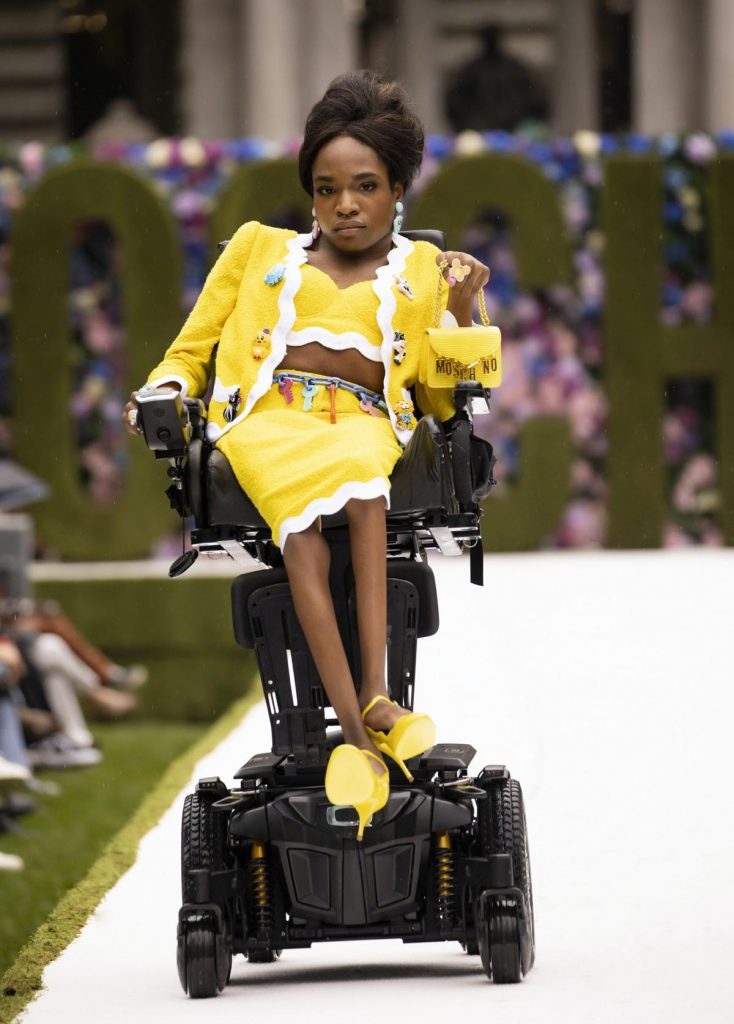
As the first black, transgender and physically disabled model to be signed to a major modeling agency, Aaron Rose Philip is making fashion history. (Photo credit: Moschino)
Aaron Rose Philip is the first black, transgender and physically disabled model to be signed to a major modeling agency, Elite Model Management. The Antiguan-American model was diagnosed with cerebral palsy as a baby and began modeling at age 16 for brands Collina Strada and Marc Jacobs. At Moschino’s spring/summer 2022 runway show during New York Fashion Week, Aaron became the first model to use a wheelchair on a runway show for a major luxury fashion brand.
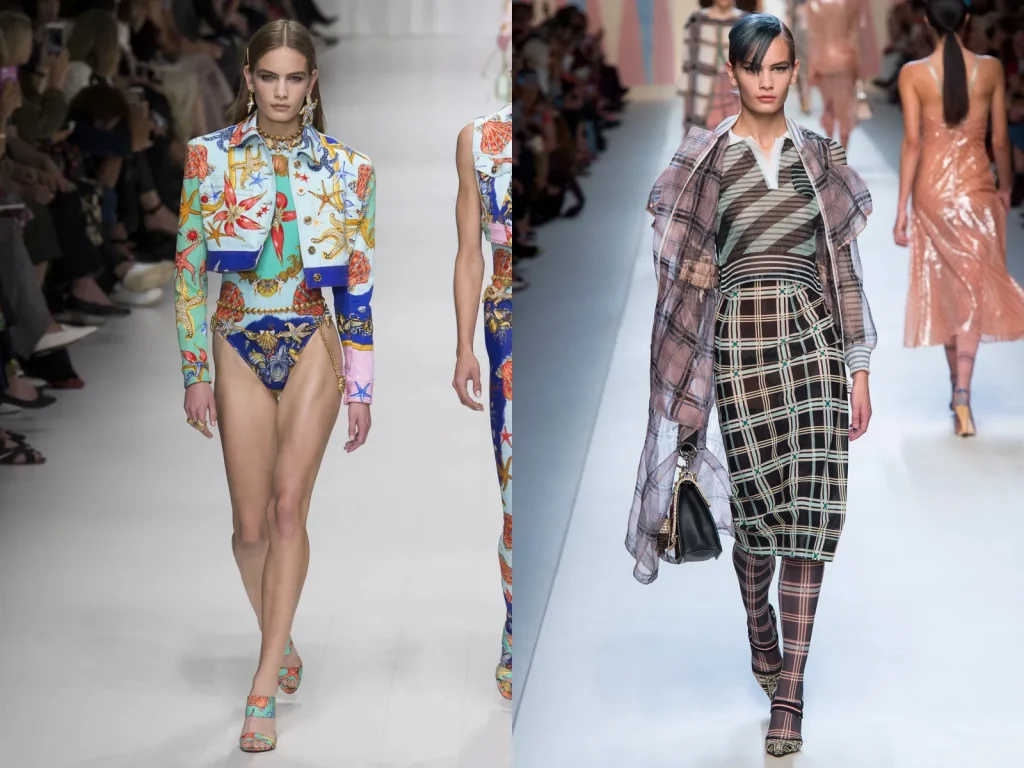
Nina Marker, the model changing the way we think about Aspergers walking the Versace show, left, and the Fendi show, right. (Photo credit: Vogue)
Also, Danish model Nina Marker, who was diagnosed with Asperger Syndrome, didn’t let it affect her career path as she walked the ramp for brands such as Dolce & Gabbana, Versace, Chanel, Fendi and Stella McCartney.
Inclusivity and diversity are allegiances that must be committed to in every aspect of the fashion industry, from employees to models to vendors and producers. It can no longer be a “side project.” The good news is that committing to increased inclusivity and diversity will enable long-lasting social change and benefit both the brand and the consumer. At last…the fashion industry is committing to inclusivity and doing right by its consumers.
Be sure to check out UoF’s Plus Size and Gender Inclusive lessons:
Ink Drawing Plus Size Female Figure
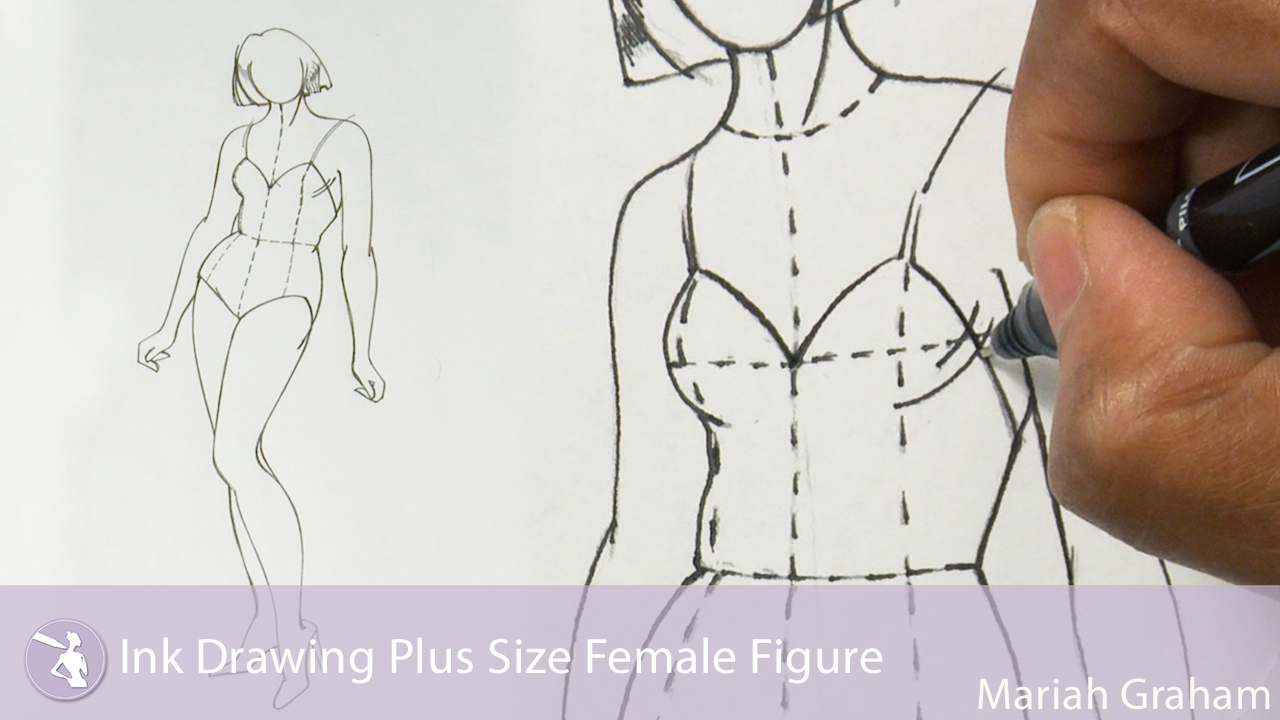
Drawing Androgynous Men’s and Women’s Figures
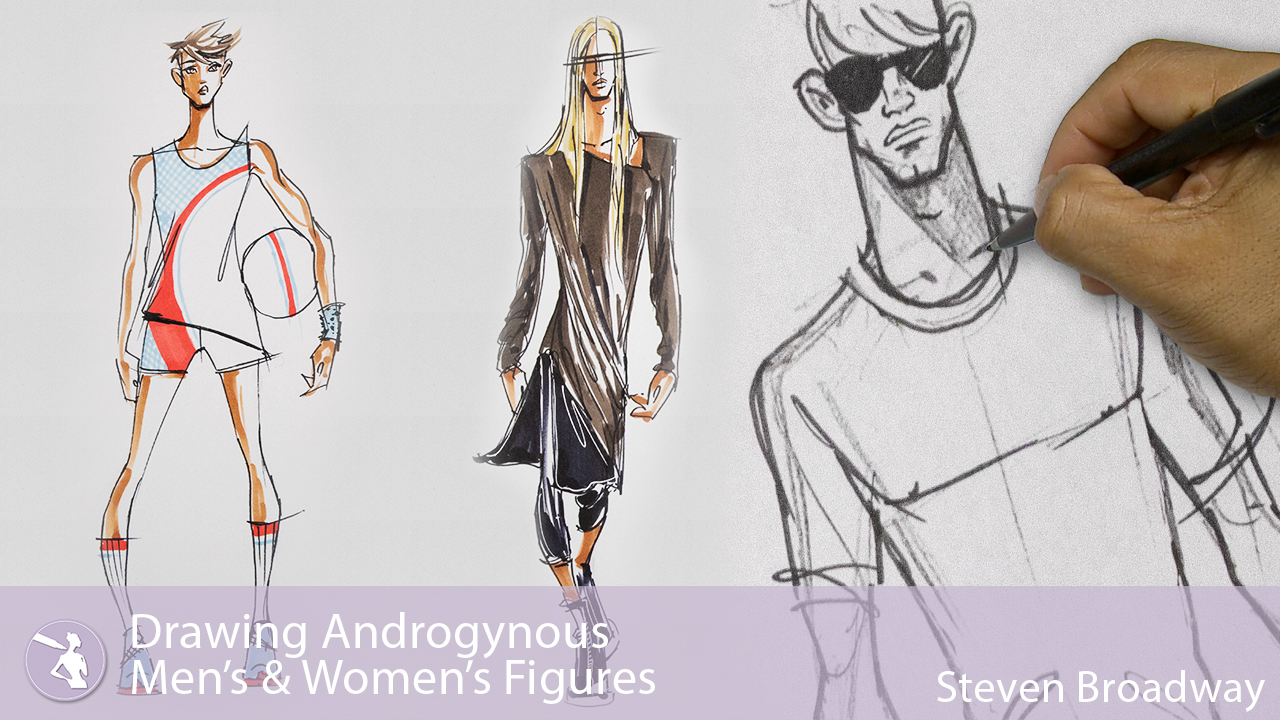
Plus Size: Statistics & Body Types
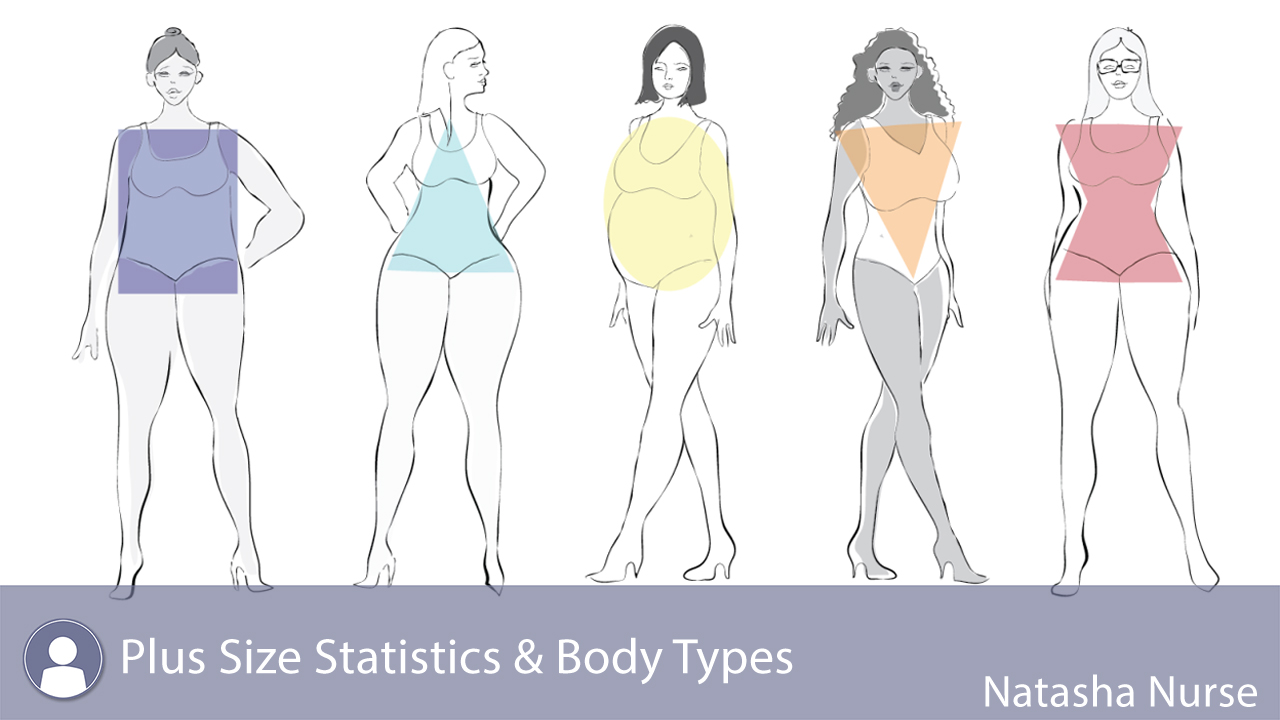
Plus Size: Models, Illustrators, Designers and More
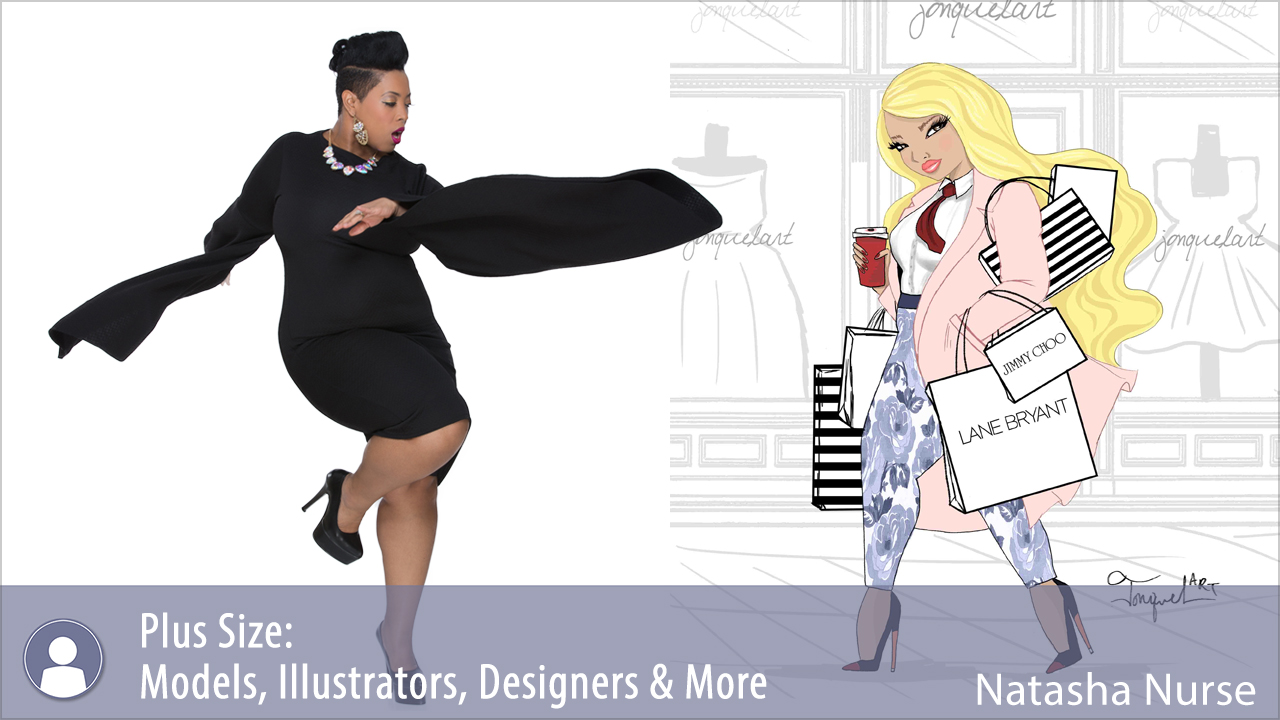
Plus Size: Social Media Influencers

Plus Size: Social Media Influencers

So tell us, what fashion brands do you want to give a shout to for being inclusive?
-------------------------------------
By: Antonia Sardone
Title: FASHION’S LONG ROAD TO INCLUSIVITY
Sourced From: www.universityoffashion.com/blog/fashions-long-road-to-inclusivity/
Published Date: Sun, 29 May 2022 12:15:15 +0000
Read More
 FestivalsMusicNew ReleasesArtistsFashion & ClothingVideosPrivacy PolicyTerms And Conditions
FestivalsMusicNew ReleasesArtistsFashion & ClothingVideosPrivacy PolicyTerms And Conditions
